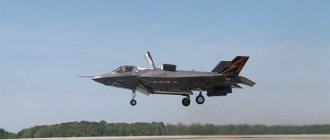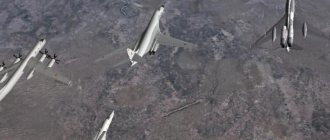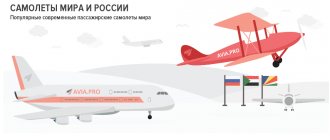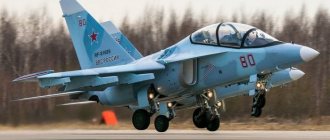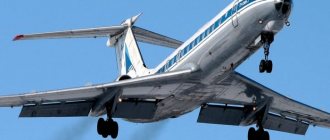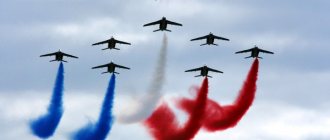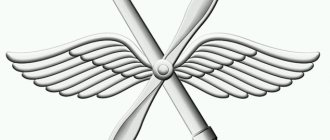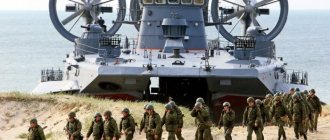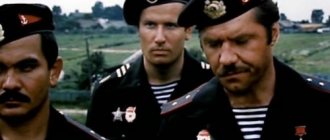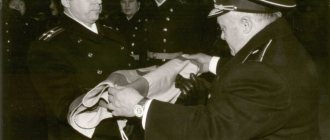One of the most successful training machines ever created in Russian aviation, the Yak-130 aircraft, has a complex and interesting fate. The first thoughts about creating an aircraft for pilot training arose even before the collapse of the Soviet Union, but the project was destined to survive a difficult time for the country, when any undertakings in both the civilian and military spheres were frozen or ended. But this aircraft was lucky enough to become the first completed project in New Russia. In 2010, the aircraft began to enter service with the army for pilot training.
Now we can safely say that the multi-purpose, training Yak-130 is not only a successful project of the country, but the main competitor for the global military industry. The machine is a development that, in practice, prepares pilots to fly attack aircraft and fourth- and fifth-generation fighters (both Russian and foreign-made).
History of creation
Since the early 70s of the 20th century, the Soviet Air Force used Czechoslovak-built L-39 aircraft to train pilots. They were equipped with dual-circuit engines, which were imported from the USSR. Czech training vehicles were used in all Warsaw Pact countries.
But this aircraft became outdated so quickly after entering service that in the mid-80s it was seriously inferior to reality. Then the first thoughts arose that a new machine was needed, which would not only prepare for flights on aircraft of that time (fourth generation: Su-27 and MiG-29), but also allow it to cover future generations of military aviation.
The collapse of the Soviet Union had a big impact on the project. The new car lacked financing. And although the competition was announced at the height of events, in 1990, most of the country’s design bureaus took part.
Projects began to be developed by the Sukhoi Design Bureau, the Mikoyan Design Bureau, the Yakovlev Design Bureau, as well as the Myasishchev EMZ.
Sukhoi proposed the UTS S-54 aircraft, which flew at supersonic speed, but was not accepted by the commission due to the fact that it trained pilots exclusively in medium and advanced piloting programs. The designers of the bureau believed that it was impossible to implement the entire training cycle in one machine. This opinion, by the way, is still considered unrefuted.
And the Mikoyan Design Bureau began to build an economical aircraft. This made the MiG-AT project cheap and simplified.
EMZ Myasishchev presented the M-200, which was distinguished by a high level of software. In fact, this training aircraft was a whole complex of training, as it also involved serious ground training in special classes.
Yakovlev presented the commission with the UTS-Yak, which later became today's Yak-130. It was also equipped with an advanced computer modeling system, as well as training complexes on the ground. In addition, the model paid increased attention to the creation of simple and autonomous mechanisms for easy maintenance of machines.
The competition itself was an ordeal. The conditions of the collapsing economy left their mark. The members of the commission were under pressure, since each concern understood that new projects would allow them to continue working and survive, so it was important to obtain guarantees of new orders. During the ups and downs, preference was given to the projects of Yakovlev and Myasishchev.
It is believed that the commission removed the work of Sukhoi and Mikoyan from continuing the fight, since they were already making fighters for government and export orders.
However, later Myasishchev’s project was excluded and Mikoyan’s work was taken over. The reasons for this decision are still unclear.
Further tasks simplified the work of the design bureaus. Thus, the requirements for speed during landing were relaxed (acceptable indicators increased to 180-190 km/h), the length of the required runway was also adjusted (increased to 700 m). The ferry range became half a thousand kilometers shorter, and the requirements for the angle of attack were 25 degrees.
But due to financing problems, Yakovlev continued the project in collaboration with the Italian company L'Alenia Aermacchi. The Mikoyan Design Bureau also turned to European partners for help. Only they worked in close collaboration with French engineers.
But the Yakovlev Design Bureau and the Italians soon stopped collaborating. L'Alenia Aermacchi withdrew from the project and took away part of the technical documentation. Later they made the M-346 aircraft, which is now the main competitor of the Yak-130.
Both the Russians and Italians brought their projects to completion. At the Yakovlev Design Bureau in 1996, the Yak-130 was assembled and sent on its first test flight. Its airframe and wing were no different from the M-346 (externally the planes have virtually no differences), but the equipment and engines were installed on their own.
After numerous tests and design improvements, the Yak-130 was recognized as the winner of the competition.
This happened in 2001, and made it possible to become the first training aircraft in the history of Russia, made from scratch, and not modified according to projects left as a legacy from the USSR.
In 2004, deliveries of the Yak-130 began as training aircraft to regular units. And 2011 was marked by the creation of a light attack aircraft based on the training model. Today the Yak-130 is in great demand. Only in Russia it is planned to put it on combat duty and as a training aircraft in the amount of 250 units. Orders have already been placed for 100 units. Global demand is estimated at 2,500 units.
Production has been launched at a plant in Nizhny Novgorod and Irkutsk (mainly, it is intended to target its products for export). The approximate cost of the Yak-130 for the Russian Air Force is estimated at 7.5 million US dollars. The export price is 15 million US dollars.
Design and tasks
The design of the Yak-130 turned out to be so successful that it is capable of performing the tasks not only of a training aircraft (which was originally intended for), but also of an attack aircraft (used in regular units). In addition, it can perform the tasks of a fighter, electronic warfare vehicle - as a jammer for enemy aircraft and ships.
The Yak-130 is being seriously considered as a base for the creation of unmanned military aerial vehicles.
It is quite possible that it will be widely used in the future army of Russia and allied countries.
Structurally, the Yak-130 is a monoplane with a swept wing in the middle. The wings, in mass versions, received the ability to accommodate additional weapons (air-to-air missiles) or radar warfare equipment.
The external highlight of the aircraft is the characteristic sagging between the wing and fuselage. Air intakes are structurally provided under them.
A fairly large space in the bow is occupied by the glass cockpit. It is designed for two pilots. The instrument panels for each of them are equipped with liquid crystal displays.
To simulate the flight of any fighter aircraft, information can be displayed on the windshield in the form of a collimator display. Another feature that is most often characteristic of training aviation is that the co-pilot’s seat is higher, which allows for an increased viewing angle (most often the instructor is located there).
The Yak-130 is equipped with two AI-222-25 engines. But in the future they will be changed to others due to the severance of ties with Ukraine, where they were produced. In terms of thrust levels, these power plants do not exceed those of foreign analogues, and are even significantly inferior to them at this point in time.
The chassis is standard, on three supports. A key feature is the ability to land on unpaved airfields. The tanks were placed in the wing and fuselage of the aircraft. It is possible to increase the flight range by installing drop tanks on the wings. A radar is located in the forward part of the fuselage.
Navigation equipment includes a classic radio navigation system as well as satellite systems.
The plane is made entirely of aluminum, not composite materials. This choice was dictated by the developers’ decision to simplify machine repair. By the way, the Italian brother of the aircraft uses modern composite materials in its production, which makes it more than twice as expensive. Servicing the Italian M-346 is also significantly more expensive.
Design features of the Yak-130 training aircraft
The most important quality of the training versions of the Yak-130 is the ability to imitate the behavior of the vast majority of combat aircraft. Special aerodynamic properties provide the Yak-130 with high maneuverability at extremely low speeds and a high rate of climb. This training aircraft can accurately target targets both in the air and on the ground.
Simulation of aircraft dynamics and behavior is provided by the KSU-130 system. Thanks to this unique development, fighter and attack aircraft maneuvers are practiced on the Yak-130:
- Russian: MiG-29, Su-30;
- foreign: F-15, F-16, F-22, Mirage, Harrier, JSF.
On an airplane you can simulate air combat, as well as work on ground targets. The functionality of the Yak-130 makes it possible to carry out up to 80% of the practice program for young pilots on one machine. In other words, pilots can receive both the basics of flying a combat aircraft and more advanced knowledge.
In the process of working on the Yak-130, the opportunity is realized to be more tolerant of mistakes at first, that is, to mitigate the consequences of pilot uncertainty.
But as professional training progresses, training becomes more and more close to reality, which ensures good preparation. The control system is well protected from erroneous management actions. The Yak-103 uses digital tools to analyze pilot actions.
The Yak-130 most accurately simulates the launch of missiles and bombs. In this case, the process itself takes place virtually, but records all the inaccuracies and errors in the pilot’s work.
Training vehicles are characterized by a well-developed pilot ejection system. During pre-production tests, there were cases when the control of the Yak-130 failed and the pilots successfully left the plane.
Ejection is carried out using class “0-0” seats.
Pilots leave the cockpit through the forward canopy. A distinctive feature of the Yak-130 is the ability to successfully and safely eject at zero speed, as well as at low altitude (down to zero level).
Design features of the Yak-130 combat aircraft
Since 2011, developers began to create combat versions of the Yak-130. It turned out that the aircraft is well suited for combat not only against ground targets, but also against air targets. Good performance was demonstrated as part of a group attack.
There are 8 points on the wing for attaching weapons. There is another one on the lower part of the fuselage.
The total combat load reaches 3 tons. The following weapons can be used:
- guided bombs weighing 500 kilograms (the plane can take up to 4 such bombs);
- R-73 guided missiles with a range of up to 20 kilometers;
- unguided missiles S-8, S-13, S-25OFM.
The aerodynamic properties of the vehicle allow it to perform maneuvers typical of fighters of the 4++ and 5 generations.
Series
After completing the construction of a series of 12 aircraft, serial production was launched at the Irkutsk Aviation Plant. The first Yak-130s produced by IAZ, intended for the Russian and Algerian Air Forces, took to the skies in 2009, and in February 2010, the Yak-130s began to arrive in the Russian Air Force. As of the beginning of 2020, 109 machines have already been built for Russian aerospace forces and their production continues.
| type | 2008 | 2009 | 2010 | 2011 | 2012 | 2013 | 2014 | 2015 | 2016 | 2017 | 2018 | 2019 |
| Yak-130 | — | 3 | 6 | 3 | 15 | 18 | 20 | 14 | 10 | 6 | 14 | — |
Assembly of the Yak-130 at the Irkutsk Aviation Plant
Yaks are operated at training air bases in Borisoglebsk, Armavir, Kushchevskaya, as well as the Lipetsk center. As you know, mastering new technology is associated with certain difficulties and risks. The hero of our story also failed to avoid them. Unfortunately, the third flying prototype of the aircraft was lost in 2006 while testing an integrated control system. Another aircraft was lost on May 29, 2010. In both cases, the pilots managed to escape. But on April 15, 2014, to our deep regret, Lieutenant Colonel Sergei Seryogin was unable to escape. Two more cases of damage to the Yak-130 associated with the failure of the front landing gear to extend occurred on June 21, 2022. The latest was an accident that occurred on September 16, 2022 with an aircraft from the training center in Borisoglebsk. After identifying the reasons, all Yak-130s were modified and their mass production continues.
Emergency landing of the Yak-130 September 16, 2022
Two Yak-130 accidents per day
Flight performance (compared to main competitors)
In terms of its characteristics, the Yak-130 is very close to its foreign counterparts. A particularly strong similarity is visible with the Italian M-346.
But in comparison with many non-domestic assembled models, Yaks are superior in price and are renowned for their Russian quality in weapons production. Therefore, the demand for this training aircraft, produced at the Yakovlev Design Bureau, is quite large. Factories are guaranteed orders for years to come.
The Yak-130 has a wingspan of 9.84 meters. The length of the aircraft reaches 11.49 meters. Height – 4.63 meters.
To accelerate the Yak-130, a distance of 500 to 940 meters is sufficient.
The minimum ascent time to the maximum flight altitude (ceiling - 12,500 meters) is about 5 minutes (4:49).
Without load, the Yak-130 weighs 4.6 tons. Maximum take-off weight should not exceed 10.29 tons. Normal weight is in the range of 7.5...8 tons. The maximum speed is 1060 km/h, which does not exceed the speed of sound – 1230 km/h. This is quite enough for a training aircraft.
To date, 130 units of machines have been produced for the needs of the Russian Federation.
Foreign partners
Problems with state financing in the first years of independent Russia are well known. To ensure the solution of the assigned tasks, design bureaus were faced with the need to find investors. In particular, the French (engines) and Thomson (avionics), which are experiencing difficulties due to the closure of the Alpha Jet program, showed interest in the project. The Italians (airline company), also being squeezed by the British in the market, also expressed their intention to cooperate. At this point, another important marketing aspect was realized, which was that a “pure” training aircraft was unlikely to be in high demand on the market, but if it could also be used as a combat aircraft, then it was a different matter. It turned out that the Yak-130 was quite suitable for this, its tactical and technical characteristics, including operational radius, lifting weight, speed and maneuverability, met foreign requirements.
Competitors
| Yak-130 | M-346 (Italy) | L-15 (PRC) | |
| Parameters (wingspan/length), m | 9,84/11,49 | 9,72/11,49 | 9,48/12,27 |
| Weight (empty/maximum), t | 4,6/10,29 | 4,6/10,2 | 4,96/9,5 |
| Load, t | 3 | 3 | 3 |
| Ceiling, km | 12,5 | 13,7 | 16 |
| Speed, km/h | 960 with load, 1060 without load | 1060 | 1479 (supersonic) |
| Range, km | 2000 | 2000 | 3100 |
| Engines / thrust, kN | AI-222-25 / 2x24.7 | ITEC F124-GA-200 / 2x27.8 | AI-222-25F / 2x24.7 |
Content
- 1. History
- 2 Tasks
- 3 Construction
- 4 Production 4.1 Deliveries
- 8.1 Accidents and disasters
Prospects for the Yak-130
Great hopes are placed on the brainchild of Yakovlev's design bureau in the Russian Federation. The successful training aircraft Yak-130 in terms of characteristics replaces the obsolete Czech L-39, which is planned to be withdrawn from service by the end of the 2020s. Although the new Russian Yak is more expensive than the Czech training aircraft, it is aimed at the distant future. Therefore, the country's leadership gave preference to the Yak-130.
By the way, the new model of the Czech manufacturer (L-159) was not considered by the Russian military, since the Czech Republic became a potential enemy by joining NATO. Therefore, the Yak-130 found support among the military leadership and is now produced at two factories.
There are also plans to work on the foreign market, since the aircraft has advantages over its competitors: versatility, multitasking, simplicity of design, and relatively low price.
The Yak-130 turned out to be a successful aircraft model, as it accurately imitates the operation of most modern combat aircraft.
The machine teaches pilots how to operate airplanes of generations that are just entering service. In other words, the need for this training machine will be felt for quite some time.
In addition to the main profile, the machine is also included in some secret developments. Thus, electronic warfare technology, which is not yet widely used, is installed on an aircraft, which gives it the ability to “blind the enemy.” With proper pilot skill, the Yak-130 can fight superior enemy forces and remain invulnerable. One plane can cause inconvenience even to the ships of a potential enemy.
Another likely area in which the Yak-130 can be used is unmanned flights. This technology is constantly evolving, and the Yak-130's lightness, maneuverability and ability to carry weapons make it a suitable base for the development of unmanned piloting.
Russia's main competitors in military affairs are the United States. They have seriously developed their own unmanned projects. Russia urgently has to catch up, and the Yak-130 is a ready platform for installing remote control.
The Yak-130 became the first production aircraft in Russia after the collapse of the USSR
Interesting Facts
An exact copy of the Yak-130 combat training aircraft, which was made on a scale of 1:4, turned out to be no less successful than the prototype. At aircraft modeling competitions, a copy of the Yak took first place in 2011, 2013, and 2015. In 2022, the success was less: second place.
The Yak-130 turned out to be the aircraft designed to prove the strength of Russian weapons.
Unfortunately, his time came during difficult years for the country. But the state, burdened with complex problems, found the strength to bring the ambitious project to completion.
Today we can say with confidence that the Yakovlev Design Bureau aircraft has become a symbol of the resurgent country and the armed forces of the Russian Federation.
Time flies…
In July 2009, the first Nizhny Novgorod Yak-130 was handed over to the troops, and today the first major overhaul of one of the first vehicles to restore the resource at 121 ARZ has already been completed. The aircraft is completely ready for further operation. The plant plans to switch to serial repair of aircraft of this type.
Yak-130 in workshop 121 ARZ
